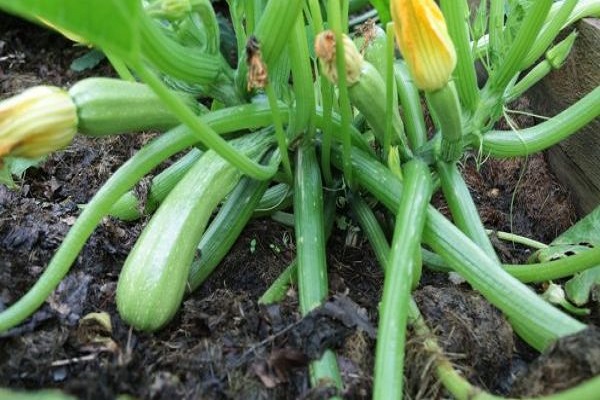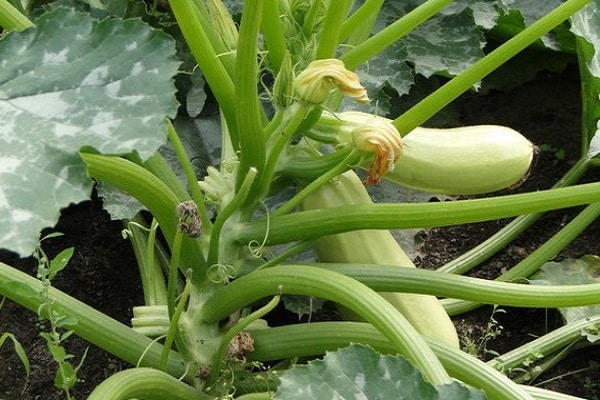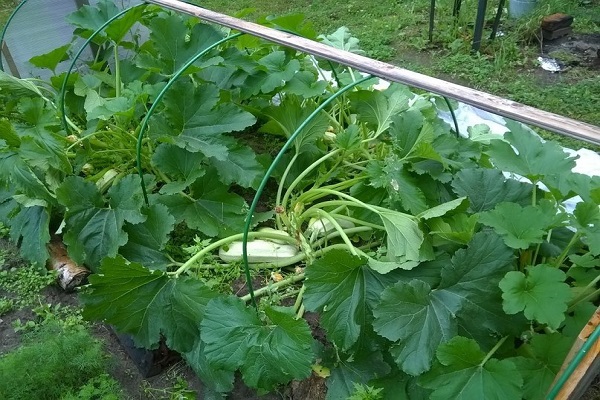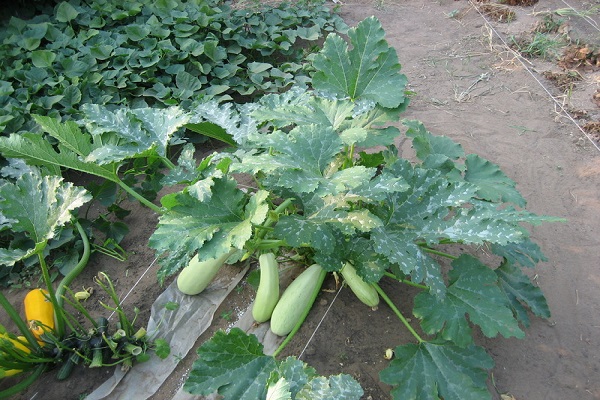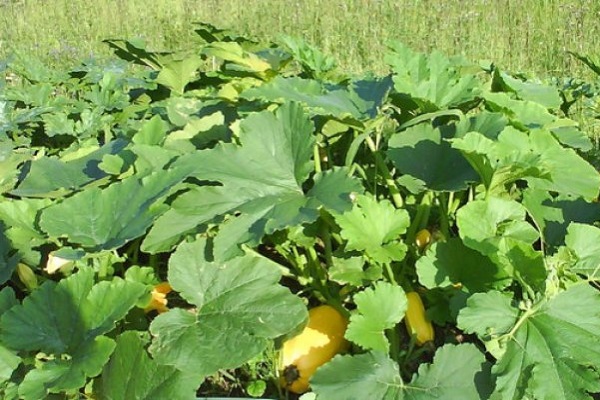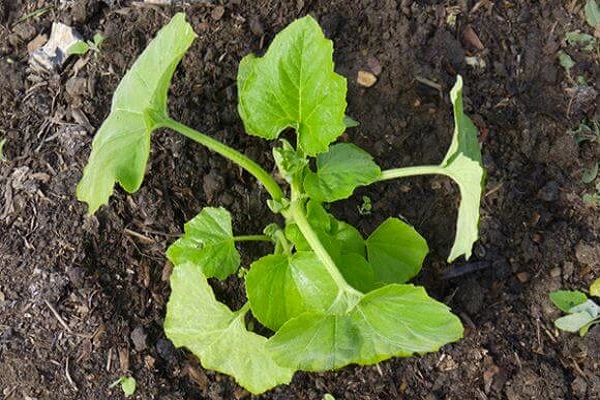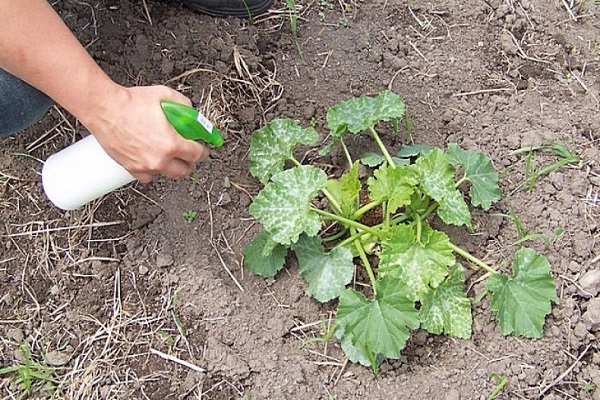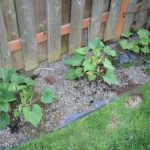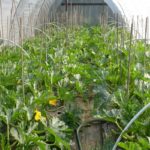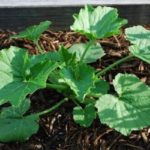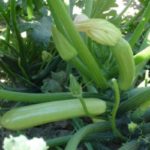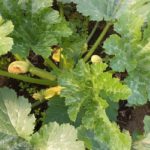Gardeners prune and pinch vegetable crops such as cucumbers, tomatoes, pumpkins, but not everyone knows whether it is possible to trim the leaves of zucchini in order to improve their fruiting. The leaves of this plant are large. They provide shade while keeping the squash cool and moist. Therefore, the question of whether it is necessary to trim the leaves is questionable.
Do I need to prune and why?
Zucchini leaves not only perform an important function - they protect the fruits from the scorching sun. A large number of leaves can also have negative consequences.If a squash bush has too much foliage, it prevents the ground from warming up and moisture from evaporating. As a result, favorable conditions are created for the life of various pests (snails, slugs).
Excessive amounts of moisture combined with lower temperatures contribute to the development of fungal diseases. In such conditions, the fruits may begin to rot. Therefore, gardeners pluck several leaves from zucchini in the open ground. This allows you to minimize the risk of the formation of negative factors.
Pruning of excess vegetation is necessary under the following conditions:
- When a disease is detected on the leaves of a plant. In this case, the infected areas are carefully removed to avoid contamination of not only the healthy part of the bush, but also other vegetables located nearby.
- If the bushes have grown and interfere with other plants.
- Yellowed and damaged leaves must be removed.
With proper care you can achieve a good harvest.
All about zucchini, rules for cutting stems and leaves
In the video you can see how to trim. This is an important process, because proper removal of excess vegetation contributes to the healthy development of any zucchini varieties.
Removing the leaves promotes better pollination of the plant. If the bush has grown greatly, it will be difficult for insects to get to the flowers and carry out pollination. And by cutting off 2-3 leaves, you can make it easier for bees to access the flowers.
What leaves can be picked and when?
How to properly remove excess vegetation:
- The green mass of the plant is not torn off, but cut off.
- The procedure must be carried out with a sharp knife.
- You need to cut the shoots as close to the stem as possible, since the hollow petioles can begin to rot and infect the plant.
Preventive pruning is carried out in three stages:
- The first time the procedure is carried out during the flowering period for better access of insects and sunlight to the flowers. They trim the foliage during the day, in good weather, so that by evening the cuts have time to dry. Remove those parts of the bush that hide the flowers.
- The following pruning is sanitary. It can be done at any time. You should first inspect all the bushes and determine the presence of green mass that needs to be cut off. Remove dried, damaged, diseased and yellow shoots.
- The third stage is carried out when fruit ovaries begin to form. This stage is important because the defective ovary is removed along with the excess leaves. You need to carefully examine the plant, identify damaged parts of the bush that are strongly shading the zucchini. The yield largely depends on this procedure.
When performing manipulations, a sense of proportion is necessary. Farmers who cut leaves from zucchini in large quantities later faced problems growing the vegetable.
Secrets and recommendations for growing zucchini
Recommendations for growing zucchini not complicated. When carried out, the process of caring for a heat-loving crop will bring pleasure and a good harvest.
Many people love zucchini dishes. The vegetable is consumed even raw, as it is rich in beneficial microelements necessary for human health. Agronomists have found that for better ripening and formation of useful substances, fruits need to spend as much time as possible in the sun. Therefore, it is so important to promptly trim excess vegetation above the fruits.
When transferring seedlings to open ground, it is recommended to take into account the possibility of vegetable growth.In some cases, bushes can have a large diameter - 1.5-2 m. The recommended distance between bushes is at least 70 cm, and between rows - at least 80 cm. It is also necessary to choose the right place for growing the crop. Zucchini love warm soil that is sunny and sheltered from the wind.
To protect vegetable beds from diseases, experienced gardeners advise planting onions and garlic nearby. Zucchini coexists perfectly with them.
Changing the growing location will help avoid diseases. Each new season, it is recommended to plant zucchini in a different area.
Watering is of great importance in caring for vegetables. The crop loves moisture, but it is better not to wet the leaves, otherwise they will get burned in sunny and hot weather. Water from below and preferably with non-cold water. Watering is combined with fertilizing. During the period of ovary formation, watering should be plentiful.
When caring for the plant, it is recommended to pay attention to trimming the lower leaves. They can greatly retain moisture, do not allow sunlight to pass through, and thereby impair the yield and ripening of fruits. You need to excise 2-3 leaves every 2 weeks, but not more often and not more. Otherwise, there is a risk of destroying the bush.
In order for the vegetable to bear fruit for as long as possible, the beds are covered with film. This is necessary to retain heat. Sheltering begins in the second half of August, when the nights become cool.
Harvesting is carried out using a knife or sharp pruning shears. The fruit is excised along with the stalk. It is not recommended to harvest from one bush more than once a week. Specimens without rot or other obvious defects are considered suitable for consumption. Their size is 20-25 cm in length and 10 cm in diameter.

